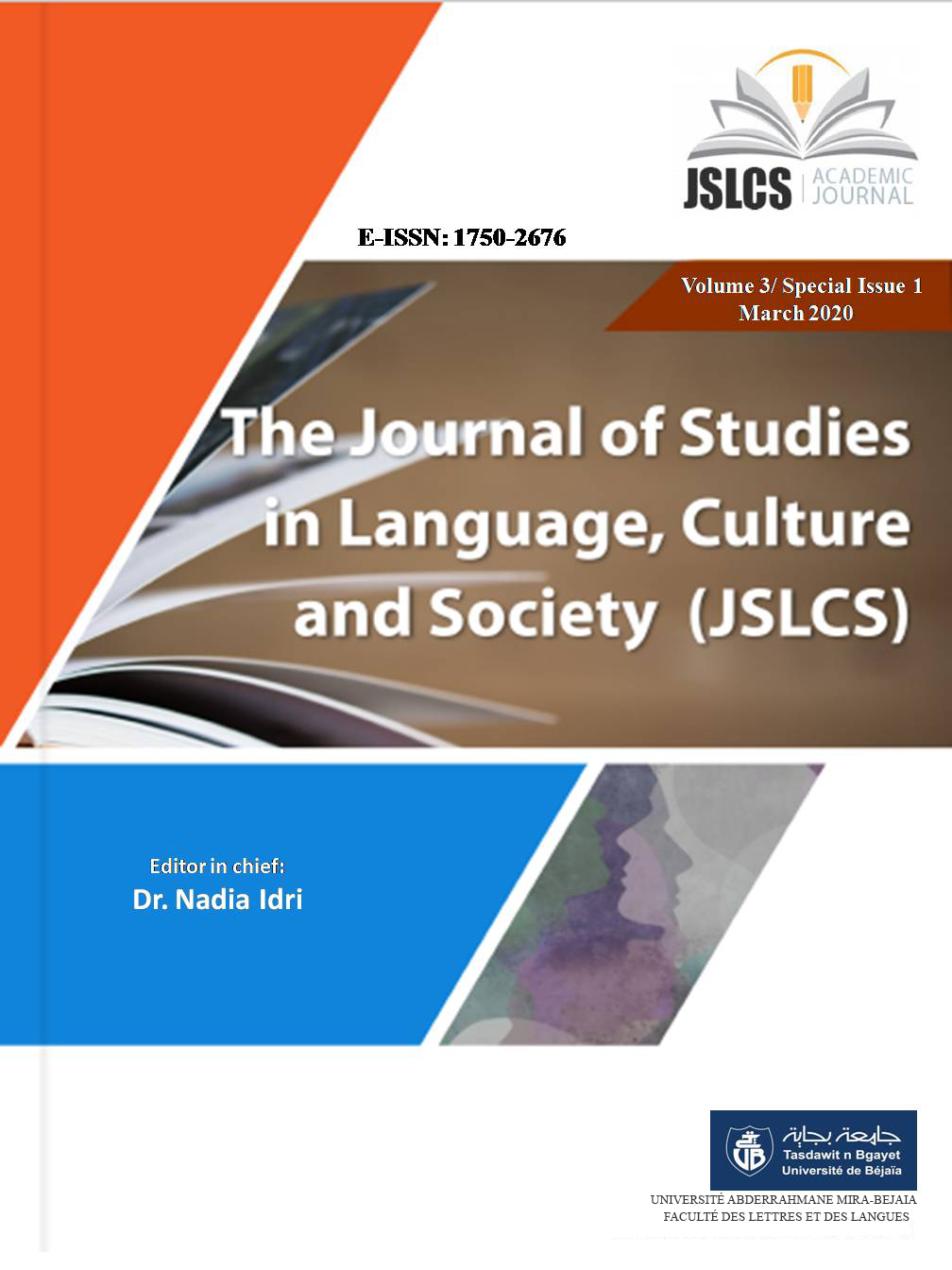Secondary School Teachers’ Practices towards the Use of Computers in Teaching English as a Foreign Language in Algeria
Keywords:
Computers, EFL, ICT, integration, technologiesAbstract
New technologies are breaking down borders and barriers at a faster rate and have made the 21st century society technologically more dependent than ever. Unexpected encounters with other languages and cultures confront the new society with new choices, opportunities and challenges. Therefore, it has become a common trend that educational policy makers require the implementation and integration of new information and communication technological gadgets like computers across curricula in order to enhance teaching efficiency. This paper aims to examine teachers’ practices towards computer use in teaching and learning English as a Foreign Language (EFL) in some secondary schools in Algeria. The study was carried out by using a qualitative method: semi-structured interview protocols, discussion and practical observations as instruments for data collection. The objective was to investigate teachers’ knowledge on the use of computers in teaching and learning and to examine their performance in classrooms. Accordingly, a total of 43 teachers from 11 secondary schools in the case study town offered their thoughts on the subject. Findings from the study showed that most secondary school teachers lacked the proper knowledge of using computer facilities in teaching and learning English. Besides, they faced many challenges that demotivated them from using computers. Although there were few facilities in the visited schools but they were not used by all the presented number of teachers. The study concludes that, the effective use of computers in teaching and learning English in secondary schools can be achieved through training especially to promote teachers’ knowledge on the use of ICT facilities that should be provided adequately.
References
Balanskat, A., Blamire, R., &Kefala, S. (2006). The ICT impact report. A review of studies of ICT impact on schools in Europe. Retrieved on 23/09/2019, from: http://insight.eun.org/shared/.
Barret, B., & Sharma, P. (2007). Blended Learning: Using Technology Inside and Beyond the Language Classroom. Macmillan.
Bingimlas, K.A. (2009). Barriers to the Successful Integration of ICT in Teaching and Learning Environments.Eurasia J. Math. Sci. Technol. Edu, 5(3), 235-245.
Downes, T., Fluck, A., Gibbons, P., Leonard, R., Matthews, C., Oliver, R., Vickers, M., & Williams. M. (2001). Making better connections: models of teacher professional development for the integration information and communication technology into classroom practice. Canberra: DEST.
Dupagne, M., & Krendl, K.A. (1992). Teachers’ attitudes toward computers: A review of the literature, J. Res. Computing in Edu, 24, 420- 429.
Farrell, G., Isaacs, S., &Trucano, M. (2007). Survey of ICT and Education in Africa (Volume2). Washington DC: World Bank.
Gregori-Signes, C. (2014). Digital storytelling and multimodal literacy in education. PortaLinguarum, 22, 237- 250.
Gray, D.S., & Souter, N. (2000). Secondary Science Teachers Attitudes towards ICT in Scotland. Glasgow: University of Strathclyde.
Gulbahar, Y. (2005). ICT Usage in Higher Education: A Case Study on Pre-service Teachers and Instructors. Turk. Online J. Edu. Technol. 7(1). 67-80.
Hutchinson, T., & Waters, A. (1987). English for specific purposes: a learning centered approach. CUP, UK. chapter 1.
Infodev (2007). Survey of ICT and Education in Africa: ICT in Education in Algeria.-InfoDev (Algeria CountrReport/Algeria-1). Retrieved from: http://www.infodev.org [Accessed on: 01/11/2019].
Infodev (2010). Knowledge Maps: ICTs in Education.-InfoDev (Information for Development Program). Retrieved from: http://www.infodev.org/en/project [Accessed on: 11/01/2018]
Jung, I. (2003). ICT-pedagogy integration in teacher training: Application cases Worldwide .Educational Technology and Society, 8(2), 94–101.
Kalinga, E.A. (2008). Development of an interactive e-learning management system for Tanzania secondary school, Oslo: Blekinge Institute of Technology.
Kasoko, G.A., & Tella, A. (2010). Teacher’s perception of the contribution of ICT to pupils’ performance in Christian religious. Education Department of Library and Information Studies, Faculty of Humanities, University of Botswana.
Kirschner, P., & Davis, N. (2003) Pedagogic benchmarks for information and communication technology in teacher education. Technology, Pedagogy and Education, 12(1), 125–147.
Mwalongo, A. (2011). Teachers’ perceptions about ICT for teaching, professional development, administration and personal use. International Journal of Education and, Development using Information and Communication Technology (IJEDICT), 7, 36-49.
Nihuka, K. A. (2009). ICT in teacher education: An analysis of educational media and technology instructional material of the open university of Tanzania. Dar es Salaam: The Open University of Tanzania.
Rastogi, A., & Malhorta, S. (2013). ICT skills and attitude, determinants of ICT pedagogy. Integration European Academic Research, 1, 300-370.
Robin, B.R. (2016). The Power of Digital Storytelling to Support Teaching and Learning. Digital Education Review, 30, 17-29.
Rosen, L.D., & Weil, M.M. (1995). Computer availability, computer experience, and Technophobia among Public School Teachers, Computers in Human Behavior, 11, 9-31.
Shah, M.P., & Kandasamy, M. (2012). Knowledge, attitude and use of ICT among Esl teachers. J. Edu. Admin, 4, 300-380.
Soler-Pardo, B. (2014). Digital storytelling: A case study of the creation, and narration of a story by EFL learners. Digital Education Review, 26, 74-84.
Stienen, J. (2007). ICTs for education: Impact and lessons learned from IICD-supported activities. Hague:IICD.
Tedla, B.A. (2012). Understanding the importance, impacts and barriers of ICT on teaching and learning in east African countries. Int. J. for e-learning, 2, 356-400.
Winnans, C., & Brown, D.S. (1992). Some factors affecting elementary teachers ‘use of the computer. Computers in Education, 18, 301-309.
Ya'acob, A., MohdNor, N.F., &Azman, H. (2005). Implementation of the Malaysian smart schools: An investigation of teaching-learning practices and teacher-student readiness. Internet Journal of eLanguage Learning & Teaching, 2(2), 16-25.








